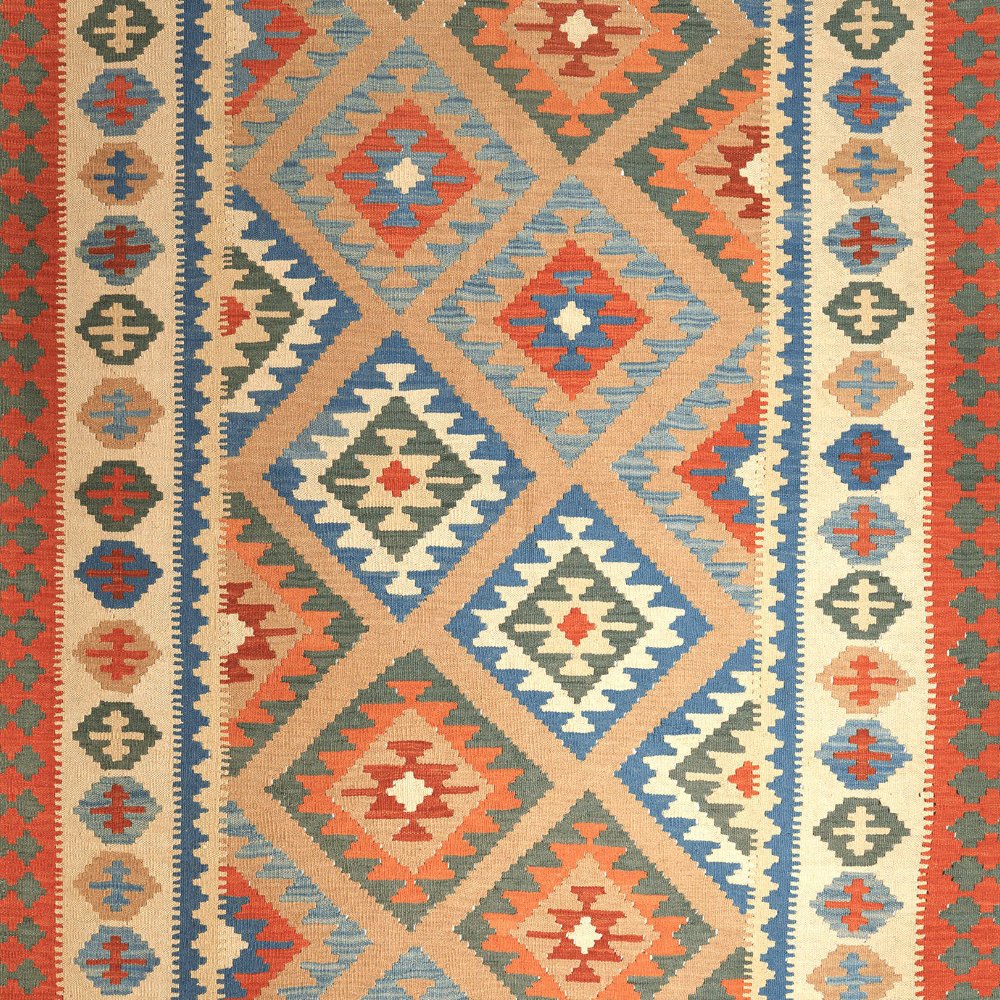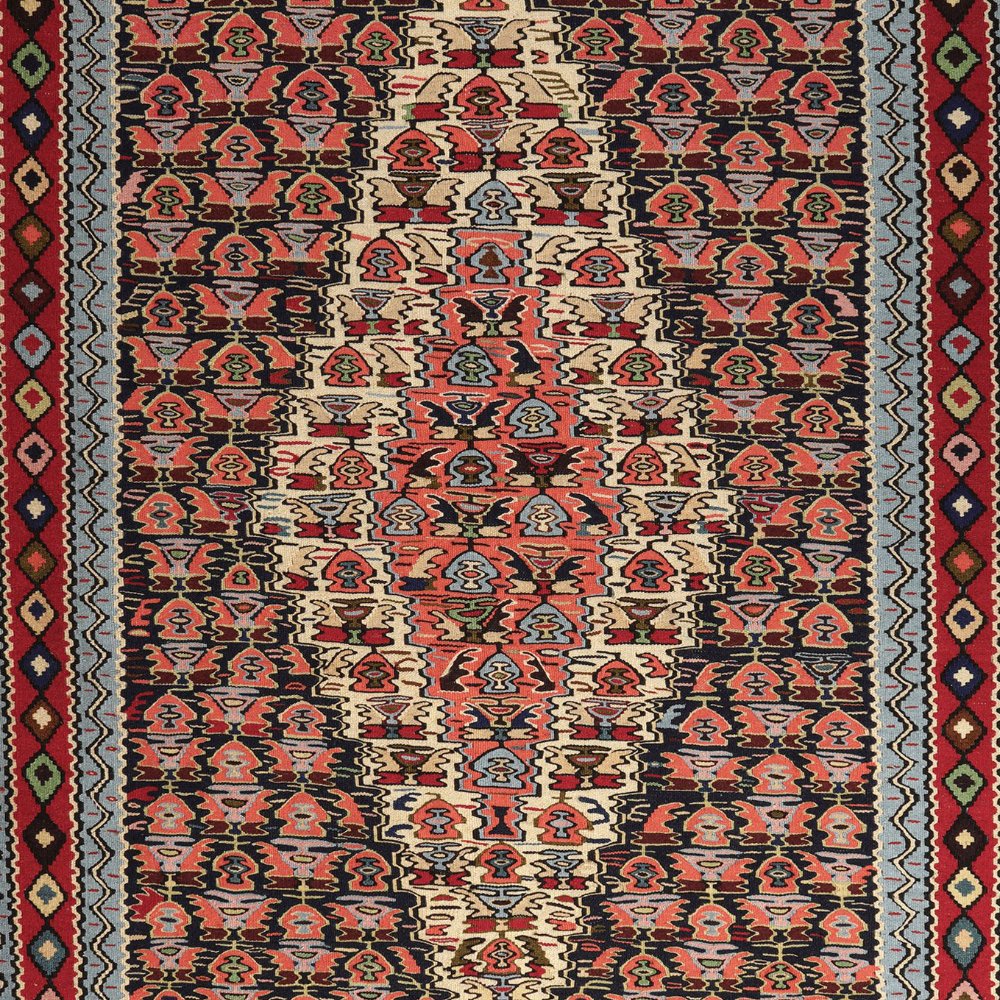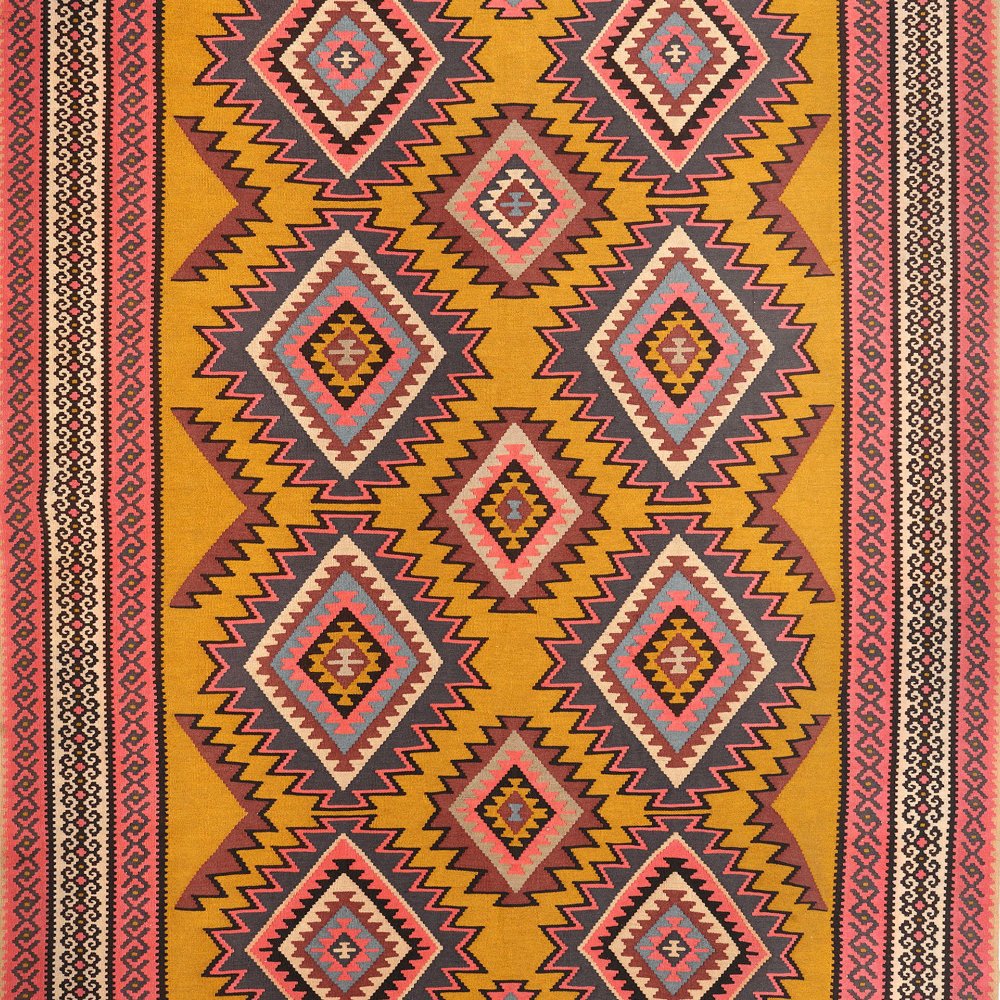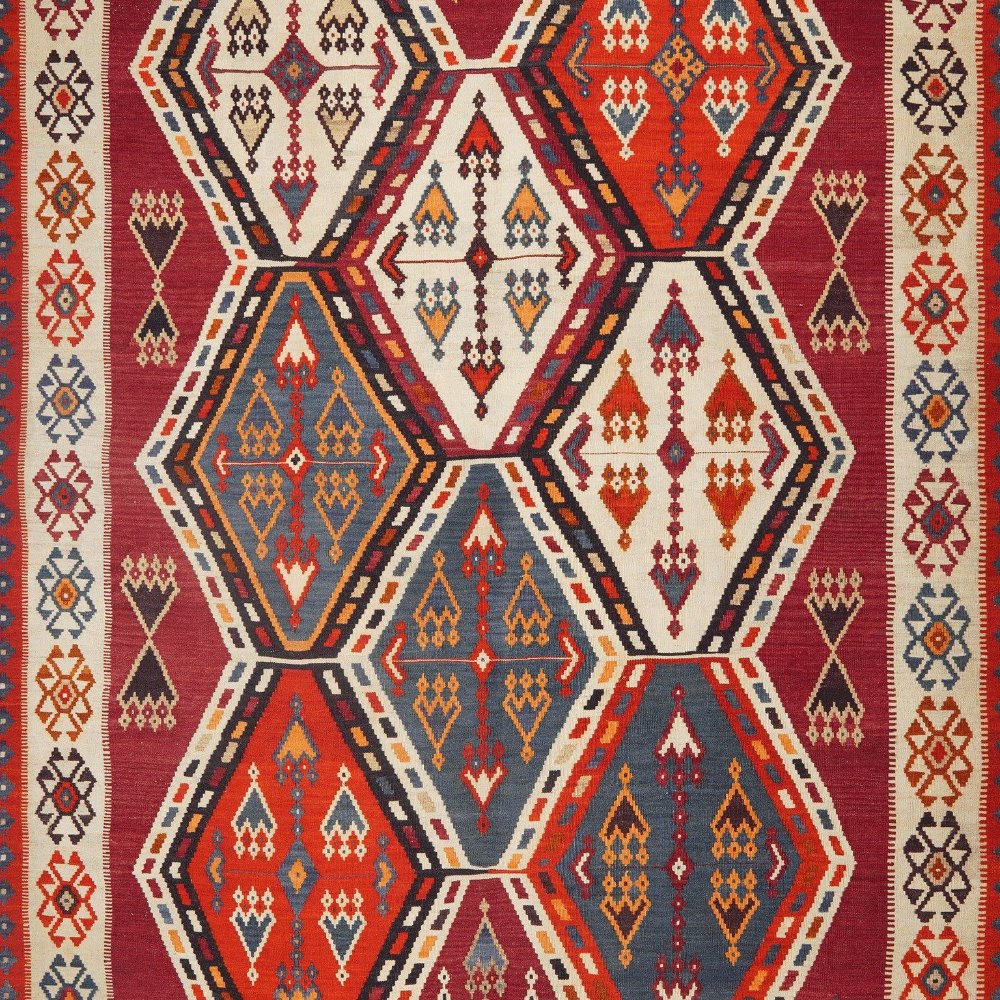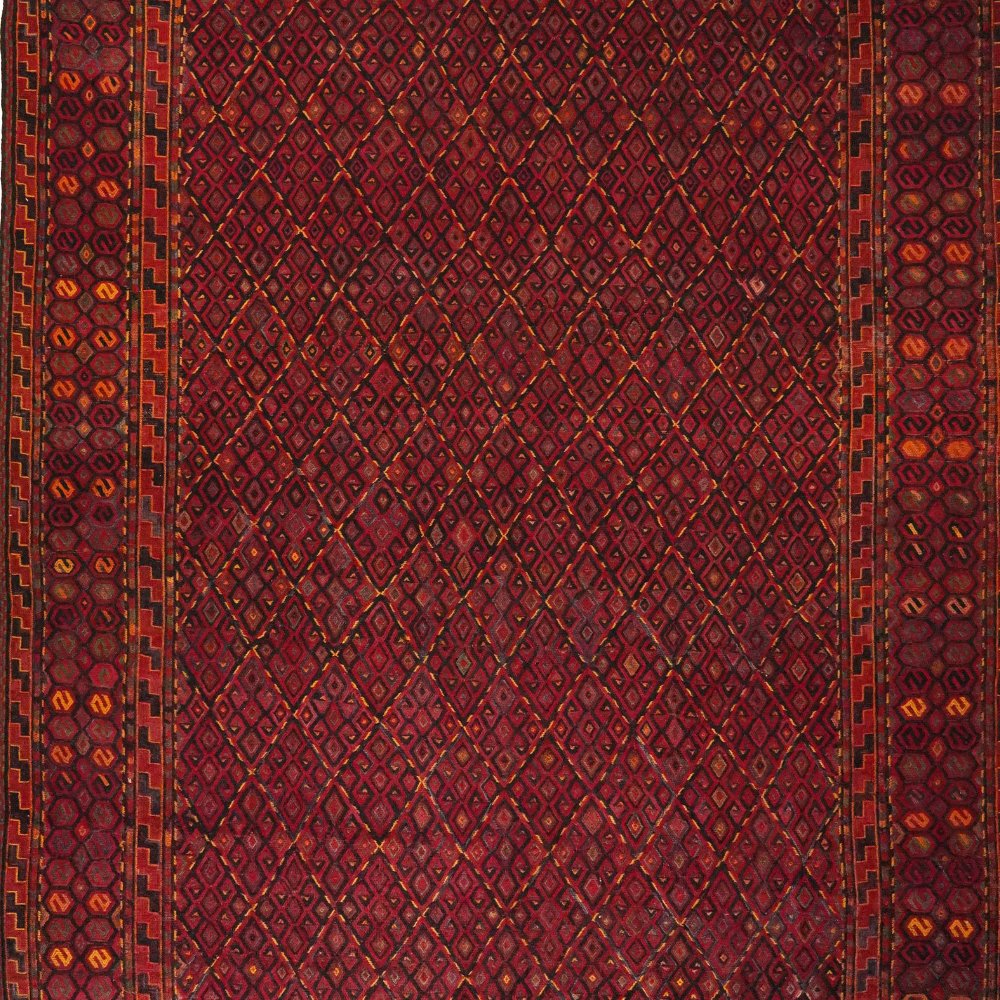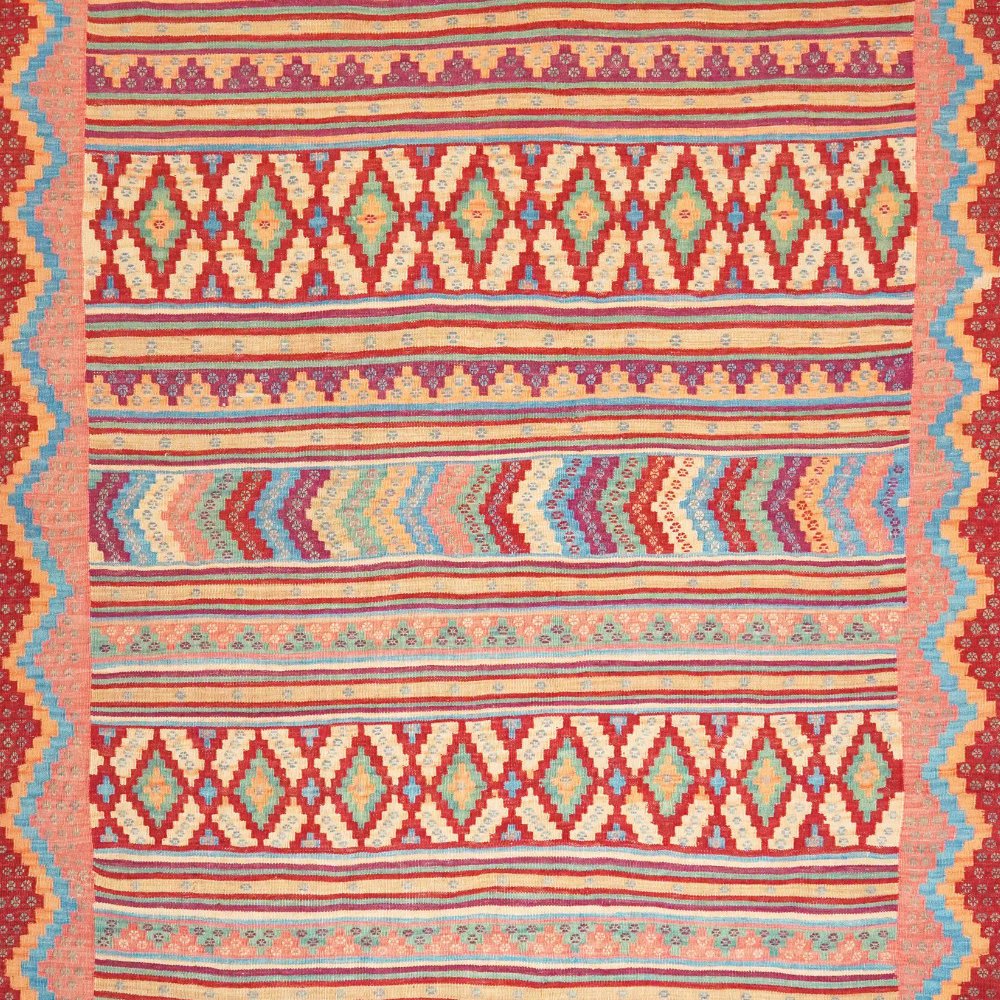Kelim Gashgai
The Gashghai or Qashqai are Turkish speaking nomad tribes, who mainly live in the province of Fars, especially around the town of Shiraz in the southwest of Iran. Besides rugs, they also produce a large variety of flat woven Kelim made with the typical slit weave technique. This means that slits in the Kelim are part of the making procedure, especially when colours change. The technique implicates the structure of the motifs, which are mainly geometric — typical Kelim designs. The nomads do not follow a given design or template. They knot according to their memory and personal taste. The result is a large variety of designs and colours which only based on the individual taste and tradition of the weavers. An advantage of the slit Kelim technique is that you can use these flatweaves from both sides.
Kelim Senneh
Senneh is the ancient name of the modern town Sanandaj. The rugs and Kelim that come from the city and from nomads or farmers in the surrounding region are known as Senneh. The traditional pattern are continuous Mahi motifs which occur mostly with large centre fields in the middle of the rug. These durable Kurdish rugs and Kelim have a timeless design and are known for their high quality.
Kelim Afshar
Since ancient times, flatweaves have been woven in tents and homes, mostly for individual use. A lot of those old Kelim were sold by their producers or owners and ended up on Bazaars all over Iran. Initially, these Kelim had a multi-functional usage and were used not only on the floor but also to cover and decorate the tents inside and outside, to cover animals such as horse, donkeys or camels and to pack household items during migration. These old Kelim, real Vintages, have been well-maintained, washed and refurbished, and do get a second life through another home. The individual age of these Kelim can vary from years to decades.
Kelim Ardebil
The city of Ardebil is the capital of the province of the same name in northern Iran. In terms of design Ardebil rugs are related to Caucasian rugs. They're thin and have a beautiful geometric pattern. Fun fact: One of the oldest Persian rugs every discovered is called the Ardebil rug. This rug was knotted in Kashan, made for a big mosque and was sold in order to raise funds for the renovation of the mosque. Today the Ardebil rug can be marvelled at the Victoria and Albert Museum in London.
Shop Kelim Ardebil →Kelim Old
These old Kelim, true vintages, have been well cared for, washed and refurbished and will be given a second life by a new home. The individual age of these Kelim can vary from years to decades.
Shop Kelim Old →Sumak Kordi
Sumak Kordi are flat woven rugs which come from the north-eastern province of Khorassan. The producer of these rugs is a small Kurdish tribe, which has migrated into this area in the late 16th century from west Iran. Sumak is the name for a special flat weave technique, called weft wrapping. This technique gives an embroidered appearance on the front and loose ends on the back. The Kurds use a vivid and diverse colour palette designing their rugs. Primarily the rugs come in geometric patterns adorned with figures and floral motifs, arranged in horizontal stripes.
Shop Sumak Kordi →Sumak Schahsavan
The Sumak Shahsavan is a variation of the flat woven Sumak, which are made in the weft wrapping technique. Shahsavan means “those who love the king”. The name refers to the nomadic tribe that guarded Iran's northern border under Shah Abbas the Great. The Shahsavan tribe is a confederation of several Turkish speaking tribes from different ethnic origins living in the north-western part of Iran. Their flatweaves are known for their unique craft, as it's very close to embroidery. In the front it appears embroidered, in the back, you can see the loose ends of the yarn. In general, geometric Caucasian designs on a background with small elements such as animals, people and plants etc. are traditional. Many of them have soft colours, almost pastel, combined with stronger tones as red or blue. Furthermore, the weavers sometimes use silk next to wool in their designs.
Sumak Sirdjan
The Sumak Sirdjan is a rare type of Kelim. They're known for having a flat-woven front, typical for Kelim, and its threads at the back, which are not cuff off. The rugs are known for their special workmanship, as it's very close to embroidery. Next to the geometric patterns and delicate horizontal and diagonal lines, you can often find Caucasian elements in these rugs. Next to wool the, the designer use silk for their rugs.
Shop Sumak Sirdjan →
